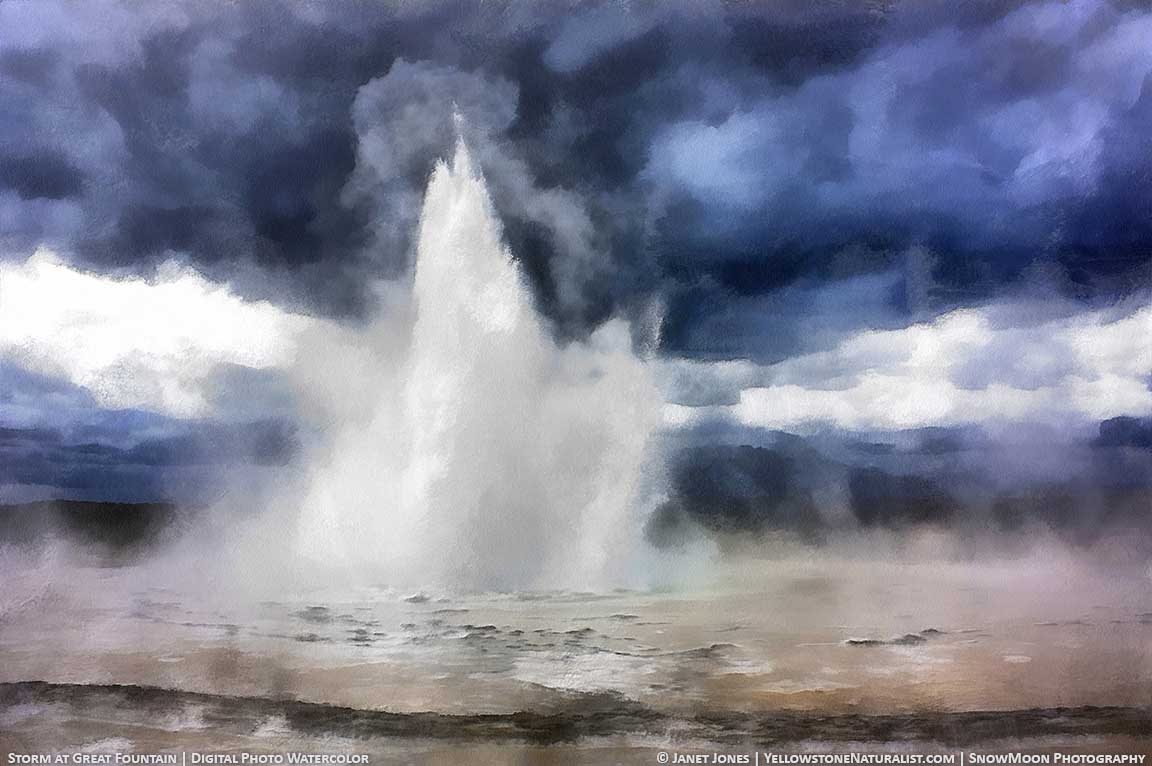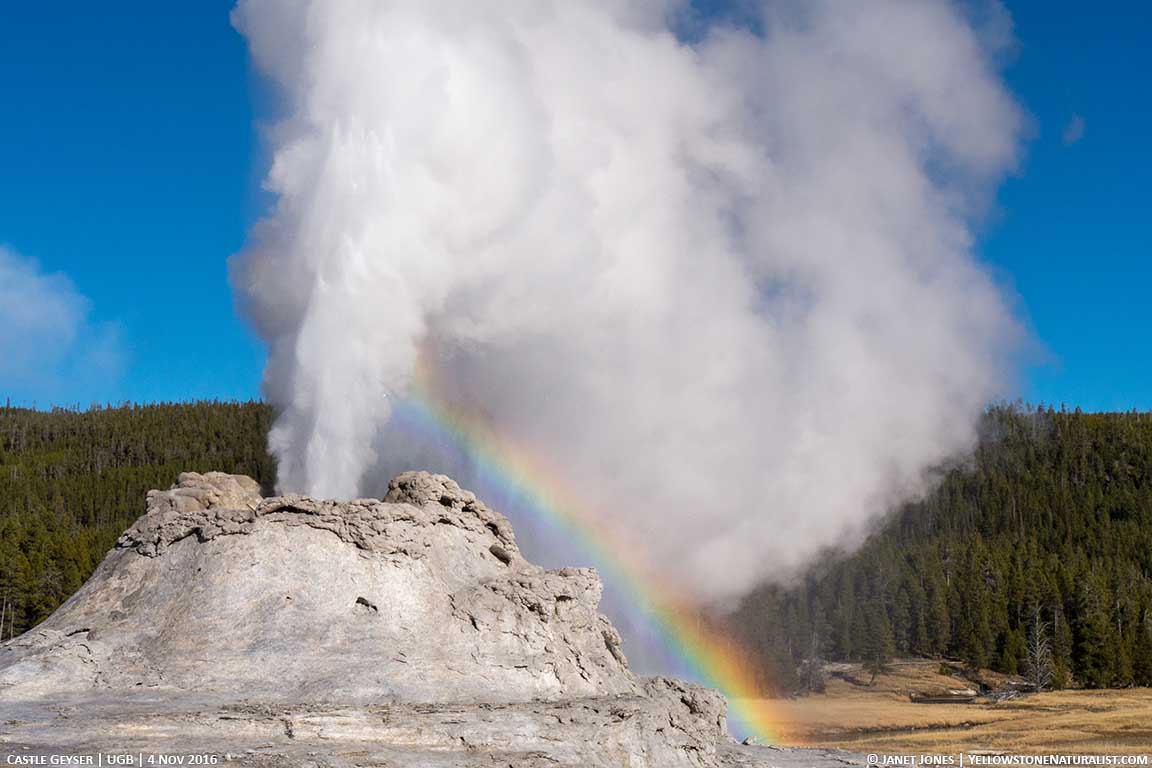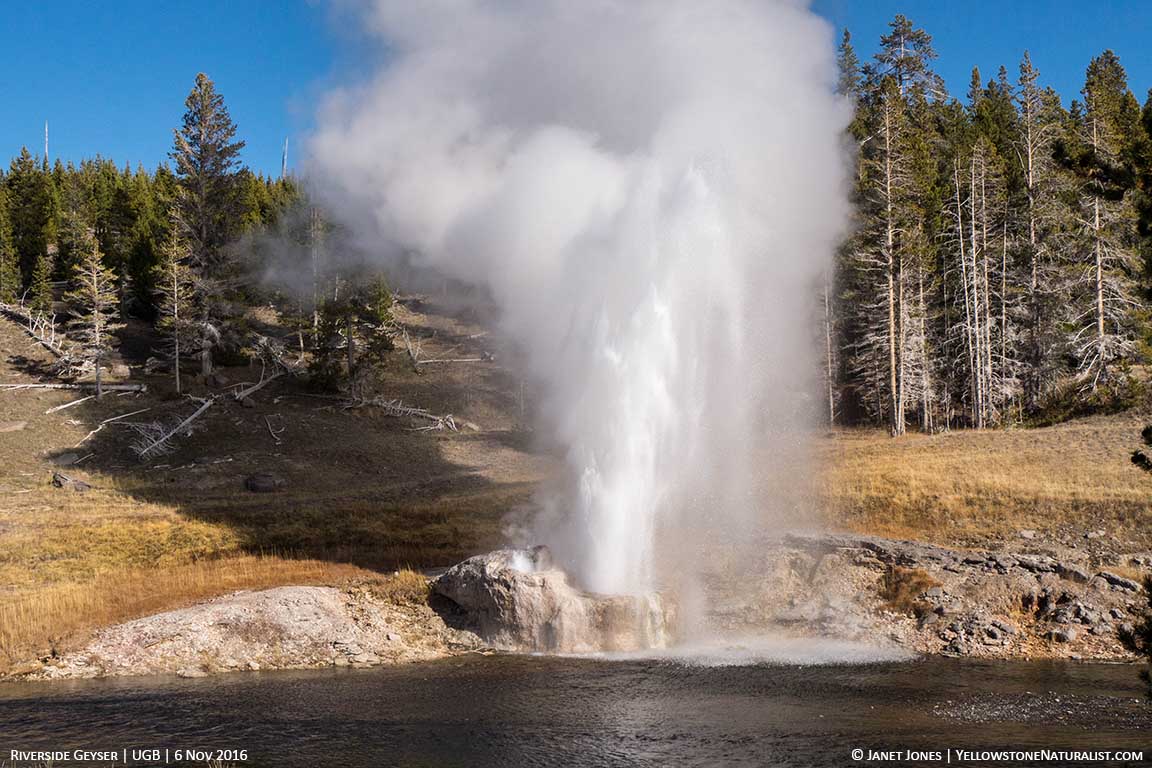Learning about Geysers
I’ve recently worked on the geyser notes for Steamboat Geyser this year (it will be one of the newsletter giveaways on Saturday – so sign up at the bottom of the page). Whenever I pull together information people have generously shared, I find myself so full of appreciation for all the various viewpoints given and strengths each of us has. In this post, I want to share more about where you can learn about geysers.
This post contains affiliate links. That means that if you follow a link and make a purchase, I receive a small portion of that purchase at no extra cost to you. These purchases help keep this site in development.
The people who find themselves loving the geysers and thermal features in Yellowstone are known as Geyser Gazers. There have always been those who find enjoyment in the geysers. In 1869, Charles Cook wrote about an eruption of Great Fountain Geyser,
“We could not contain our enthusiasm; with one accord, we all took off our hats and yelled with all our might.” – Charles Cook
Sites with information about Geysers
- NPS – The National Park Service in Yellowstone has worked over the years to gather information on the geysers. They have kept logbooks for decades – some years show rangers with a keen interest in the thermal features while others are a bit sparse. Now that more information is online, you can find quite a bit through the main Yellowstone site.
- GOSA the Geyser Observation and Study Association – While Rick Hutchinson was the park geologist, he began to work with the geyser gazers to collect information. Soon a core group of these gazers formed the Geyser Observation and Study Association. This happened back before the internet. Observations were sent to Scott Bryan, who compiled information and sent out the Sput – the newsletter of GOSA (a sput is a small geyser). Over the years, GOSA created many publications. Some came from observations and others from historical observations. It was citizen science long before that term existed. They still publish the Sput as well as occasional issues of the Transactions. The Sput can be received either electronically or in print. It’s definitely worth the subscription.
- Geyser Watch – This is right here at Yellowstone Naturalist. I started Geyser Watch as a section of my blog. I love to observe and create field journal entries. I’m a teacher by training, and love to share information. So, I research. I observe. I document. I learn more. I share my observations as much as time allows. One of my goals is to put out more of my field journal entries and get my vast collection of repeat photography photos up and online. This is a winter project that I’ll return to later in the year. As this site grows there will be more information about each thermal feature listed. I hope this inspires you to do more with your nature observations as well.
- Geyser Times – is an online log for anyone to enter their observations. They have grown tremendously and this site has become the central place to submit information. It focuses on capturing eruption times. I’m amazed at how some can see the stories in the charts, graphs, and numbers, as that’s not how my mind thinks.
How to learn about the geysers
Learning the geysers is not unlike birding where you learn the birds one at a time. You’ll likely want to do some reading before your next trip to the park and make a list of geysers you might like to catch. I’ve written a series of posts, Get to Know the Geysers to help. I’d also strongly recommend starting with Scott Bryan’s The Geysers of Yellowstone.
Once you get to the geysers, check the predictions at GeyserTimes and the NPS. Some folks use this to help them catch as many eruptions in a day as they can. Bring good walking shoes and a backpack with what you’ll need to be out most of the day. If you run into some more experienced geyser gazers, some may be willing to share information while others may be busy taking notes or may not want to talk.
If you find yourself hooked on the geysers, you’ll return again and again to learn even more. Because the thermal features change continually, there’s always more to learn and see.
Classic, Reliable Geysers – for now
Here’s a baker’s dozen list of geysers you might consider starting to research and plan to catch. Some will be easy, others will take a bit more time and dedication to see.
- Old Faithful
- Daisy Geyser
- Grand Geyser
- Riverside Geyser
- Castle Geyser
- Beehive Geyser
- Fountain Geyser
- Great Fountain Geyser
- Cliff Geyser
- Clepsydra Geyser
- Lion Geyser
- Grotto Geyser
- Jewel Geyser
Scroll down to sign up for the Yellowstone Naturalist newsletter that comes out on the first Friday or Saturday of each month.
SnowMoon Photography
Be Outside • Take Notes
AFFILIATE LINKS
This site contains affiliate links. If you click on a link and make a purchase, I receive a small portion of that sale at no extra cost to you. Your purchases help to keep this site in development.
SHOP ON AMAZON
GET MORE NEWS AND ANNOUNCEMENTS
Sign up for the Yellowstone Naturalist Newsletter



